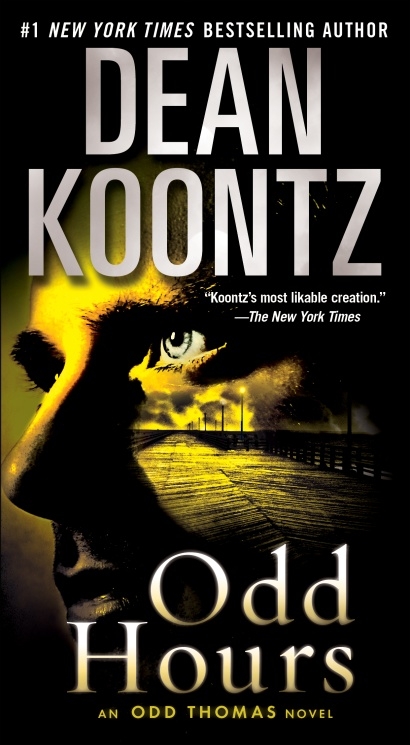 The power of Christ Impels you! This album completely surprised me, as I’d always classed Impellitteri as one of the flock of 80s shred metal bands: long on guitar sonatas, short on songwriting ability or actual hooks. Venom proved to be one of the most powerful, focused, and concise albums of its year. The LD50 for this album is very low.
The power of Christ Impels you! This album completely surprised me, as I’d always classed Impellitteri as one of the flock of 80s shred metal bands: long on guitar sonatas, short on songwriting ability or actual hooks. Venom proved to be one of the most powerful, focused, and concise albums of its year. The LD50 for this album is very low.
What to expect? Savagely fast and technical riffwork, which runs all up and down the neck while still remaining tight and groove-laden. Guitar solos that throw away any notion of “taste”, “musicality”, or “wearing pants” and just eviscerate the listener with almost unimaginably fast blurs of notes. Soaring vocals that bend and weave around the guitar lines. A bass and drum rhythm backdrop that crushes you hard enough to undergo atomic fusion.
With ten songs that are all around three minutes long, this is a shred metal album LARPing as a punk rock LP. There’s an immediateness and directness to the music that can’t really be compared to other shred metal. This is the anti-Yngwie. It doesn’t get right to the point – it starts at the point, from the moment the needle touches down. The songs fly by with alarming efficiency, verses and choruses and solos appearing and evaporating just at the point where they’ve got you intrigued.
Chris Impelliteri’s guitar sound is like the glass shards from a dirty window. Smooth, glassy, but also throat ripping, full of points seeking out the body’s softness. His tone is so thick and suffocating that he must have quadtracked the rhythm parts, despite the agility and tightness of all these songs.
And the tempo is very fast: the album strings so many uptempo songs together that the thirty-three minute runtime soon seems like a necessity, before the listener taps out. “Venom”, “Empire of Lies”, and “Nightmare” are progress at a gallop. “Face the Enemy” is perhaps the album’s slowest song, a Virgin Steele style uptempo rocker with a big chorus.
“Domino Theory” is a rolling thunderstorm of a track that might be my favourite from Impellitteri’s work here. “Jenovah” and “Rise” have hard-edged choruses with some surprising progressive sensibilities in their construction. The album closes with “Time Machine” and “Holding On”, which are equally ominous but perhaps more melodic. The European edition has a bonus track called “Rock Through the Night”, which is fine on its own, but takes the album to the point where there’s too much of the same and it starts to become a bore.
But Impellitteri astonished me with what they accomplished on this album. A shred metal album that you can listen to in one sitting, and still want more…wasn’t this always the endpoint for the genre?
No Comments »
 Some bad books are like buildings, collapsing safely in their own footprint. Cordon off the area, wear protective gear, and you’ll escape the obliteration unscathed.
Some bad books are like buildings, collapsing safely in their own footprint. Cordon off the area, wear protective gear, and you’ll escape the obliteration unscathed.
But other bad books are like trees, falling sideways. They don’t just doom themselves, they also destroy other books that happen to be nearby.
Dean Koontz writes many bad books. If they’re standalone, I don’t have a problem, as they kill nothing but themselves. But this is the fourth book in the Odd Thomas series, and as the first Odd Thomas was very good I’m not impressed that he keeps cheapening it with afterthoughts.
The story is familiar by now. Odd can see ghosts, and he must resolve the lingering conflict that keeps them from moving on. The concept is derivative of Shyamalan’s The Sixth Sense, Stephen King’s generic “big secret in a small town” conceit, and Art Bell’s radio broadcasts, but back then, it was fun. It no longer is. If Odd Thomas was The Godfather and Forever Odd was the Godfather 3, then Odd Hours is squarely in The Godfather X: Electric Boogaloo territory. It has a terrible, meandering story, a cast of “colorful” characters with no purpose beyond chewing the scenery, and a bone-deep sense of pointlessness. Odd Thomas should resolve the lingering conflict that stops his own series from moving on. I think the author murdered it, midway through book two.
Odd now lives at a place with the alarming title of Magic Beach. He has dreams of a nuclear-red storm coming in with the tide. Some thugs try to kill him. He meets a woman who gets lots of character development until Dean Koontz literally seems to forget that she’s in the story.
Is there an intelligent dog? You bet. Does the main character use a gun and is consumed with guilt and regret afterwards? Wow, you’ve read Dean Koontz before too!
The plot is insane and nonsensical. It doesn’t have logic, it has a series of events, all occurring without reference to one another.
The sheriff of Magic Beach is plotting a dastardly conspiracy – I don’t buy that a guy running a small-town cop shop would be capable of buying nuclear warheads, but your mileage may vary – and Odd Hours soon enters a familiar rhythm of the hero running away from bad guys and solving problems with author’s convenience. In this case, it doesn’t take too much convenience, because the (six or seven) villains are all bumbling idiots who could be thwarted by a childproof seal. Dean Koontz can’t figure out how to resolve the story, so he has them all shoot each other. Then the book ends.
Dean Koontz is still a good prose stylist, but he’s a heavy-handed good prose stylist. Every sentence aspires to be a lyrical utterance of lapidary beauty. Every page is crammed with wordplay, literary allusions, “clever” character names, and other pukesome shit. Dean, stop trying so hard. No, seriously, stop trying so hard. You are fish and chips. I don’t need fish and chips served on a fine Kensington tea set.
He also does that annoying thing where he writes something clever and then nudges you, to make sure you got it. Early in the book, a character is described as having “hair like wool-of-bat and tongue like fillet of fenny snake”. I’d hoped he’d leave it alone, but of course he has someone point out (for the reader’s benefit) that this is a Shakespeare reference. Thanks. Literary allusions should always be bashed through the reader’s skull with a Louisville slugger.
Koontz’s recycling is now obvious, and impossible to ignore. All the cliches make an appearance. The frequent references to classic Hollywood cinema. The angry old man rants about popular culture and modern music (you can immediately detect a bad egg in Dean Koontz’s novels, because they enjoy gangsta rap or heavy metal). At one point, he writes the character of Dick Halloran from The Shining into the story, except instead of a black man it’s a white woman and instead of “the shine” it’s “the twinge”. I hoped that he’d also borrow the axe murder scene from Kubrick’s film version, but no luck.
No Comments »
 [You have a problem.]
[You have a problem.]
[You google the problem.]
[The only relevant result is a forum thread from 2011.]
OP: [exact description of the problem you are having]
Person 1: [wrong answer]
Person 2: [wrong answer]
Person 3: [correct answer to a problem that is not this one]
Person 4: [“solution” that involves twenty hours of work, broken laws, $2000, and a fresh human kidney]
Person 5: [“solution” that amounts to “have you considered not doing the thing you’re trying to do?]
Person 6: [pointless chiming in that they don’t have that problem and therefore cannot help you]
Person 7: lol! Person 2 has a Better Call Saul avatar! Does anyone watch Better Call Saul?!? Let’s talk about Better Call Saul right here in this thread!
Person 8: [correction of spelling mistake that itself contains multiple spelling mistakes]
Person 9: [wrong answer, stated with utter confidence. Post contains the words “this WILL work” and ends with an unprompted “you’re welcome! :)” because clearly the problem is as good as fixed. Reacts with bafflement and hostility when their solution doesn’t work.]
Person 10: I have the same problem! [proceeds to describe a problem that, although superficially similar, is in fact wildly different to the one in the OP. Everyone rallies around Person 10 and starts trying to fix his totally different problem.]
Peanut gallery: [steady stream of inside jokes, innuendo, and resurrections of old catfights that nobody but they themselves understand.]
Person 11: Hey, OP, this should help [posts a link]
OP: Thanks Person 11, you fixed my problem! Wow, that was a real head-scratcher! I would NEVER have thought of that on my own!
Moderator: issue resolved. Thread locked.
[You click the link. The website went offline a long time ago, and the domain redirects to a Russian goat porn site. No backups exist on the Internet Archive.]
[You start your own thread asking for help]
Everyone: jeez, learn to search the forum! We already resolved this issue!
No Comments »
 The power of Christ Impels you! This album completely surprised me, as I’d always classed Impellitteri as one of the flock of 80s shred metal bands: long on guitar sonatas, short on songwriting ability or actual hooks. Venom proved to be one of the most powerful, focused, and concise albums of its year. The LD50 for this album is very low.
The power of Christ Impels you! This album completely surprised me, as I’d always classed Impellitteri as one of the flock of 80s shred metal bands: long on guitar sonatas, short on songwriting ability or actual hooks. Venom proved to be one of the most powerful, focused, and concise albums of its year. The LD50 for this album is very low.

